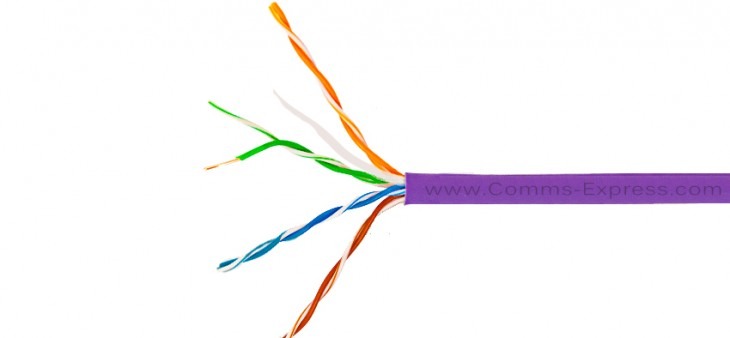
Cable speed will vary by Ethernet cabling standard. Category 6 cable supports 10BASE-T, 100BASE-TX, 1000BASE-T/1000BASE-TX (Gigabit Ethernet) and 10GBASE-T (10-Gigabit Ethernet) speeds. The Cat6a cable speeds will support up to 10 Gbps specifications, without the Cat6 run-length limitations. In contrast, Cat5e was developed to support 1000 Mbps (gigabit) speeds. It is also used with 10BASE-T and 100BASE-TX, or Fast Ethernet. In terms of frequency, Cat6 cable transmits at 250 MHz and Cat5e is rated at 100MHz, and in some cases, 350MHz. Cat6a jumps to 500 MHz frequency.
Update Cat5e Cable to Cat6?
The decision on whether or not to update Cat5e cable to Cat6 is often based on the Ethernet speeds that are desired on the network. Cat5e has the capability to support Gigabit Ethernet speeds, Cat6 cable is actually certified for this Ethernet speed. Category 5e Ethernet cable remains popular for local area networks (LANs) because the system offers a cost-effective option for Cat 5e high-speed performance. Networks that have the ability to transmit 10 gigabit Ethernet will be the ones to see the advantages of an upgrade from Category 5e to Cat6 or 6a cable.
Cat6 and Cat 6a Cable Speed
Theoretically, Cat6 cable speed supports networking at Gigabit Ethernet speeds (up to 1000 Mbps) by taking advantage of four wire pairs. To utilise actual Gigabit Ethernet speeds with Cat6 cable, each component on the network must also be rated for the speed. The Cat6 specification performs even in hostile interference environments, which can increase reliability with speed. Comms Express has information on a range of structured cabling equipment.
Related Links
Cat5e Cable
Cat5e Patch Panels
Cat5e Ethernet Cable/Patch Leads & Cables
Cat5e Modules
